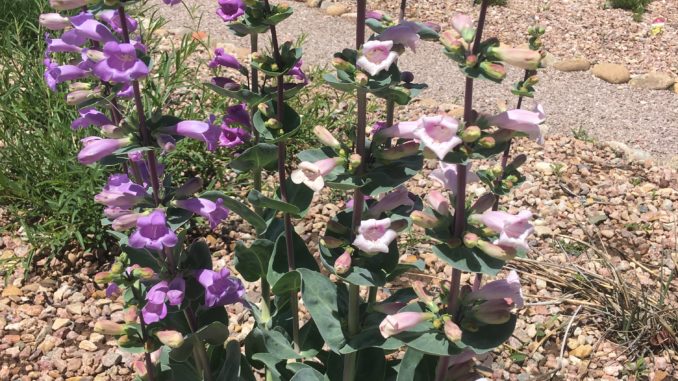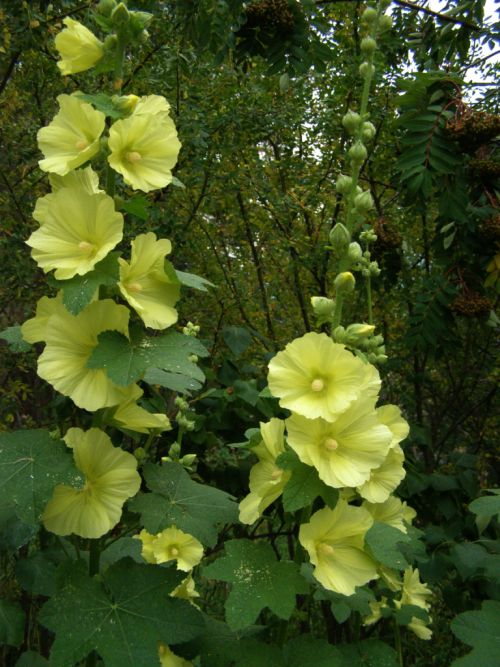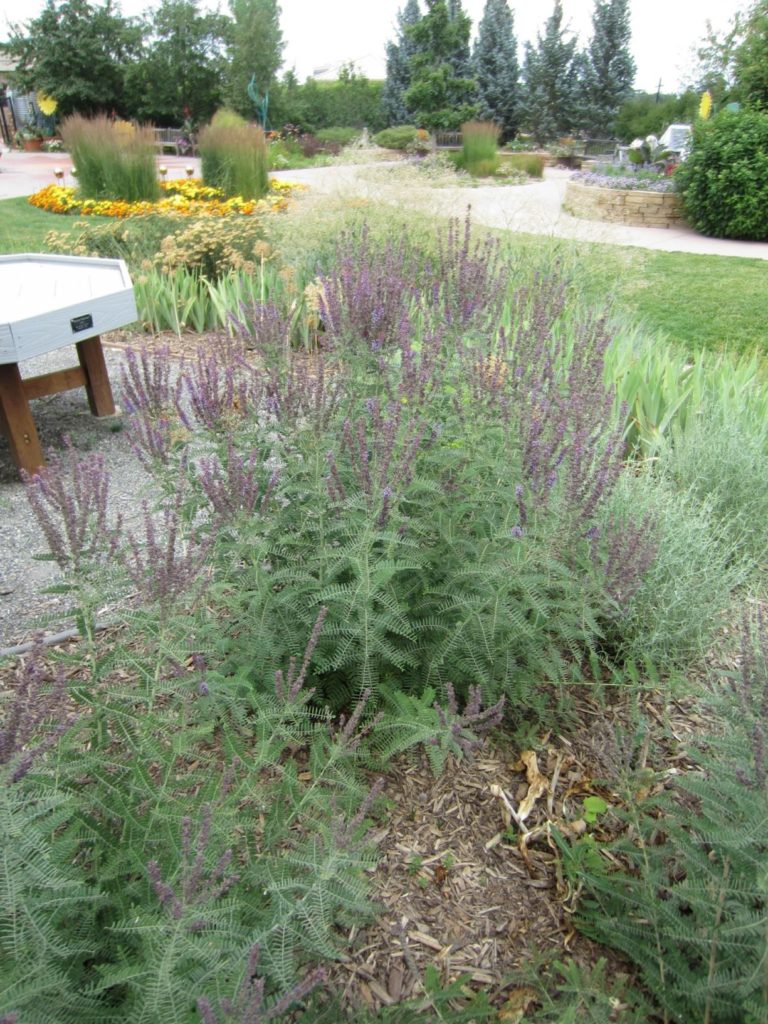
Rita Jokerst, Horticulturist, Gardens on Spring Creek
Some garden plants come in and out of fashion while others remain tried-and-true garden favorites. As people transplant themselves across the country, they may want to do the same with their darling plants, ignoring the soil, precipitation, or pest pressure conditions in their new locale. Below we discuss alternatives to some less-than-ideal plants for the Front Range. Varieties or straight species of the asterisked items can be found on our grounds at the Gardens on Spring Creek.

First up on our hit list is Alcea rosea (hollyhock) as it can be weedy, prone to rusts (common fungal diseases), and susceptible to Japanese beetle infestations. Instead, plant Sidalcea neomexicana (New Mexico checker mallow) which has miniature hollyhock-like blooms but with the bonus of being a native wildflower. Penstemon grandifloras (large beardtongue) is a good option too. In fact, Plant Select®, a nonprofit plant brand for our region, boasts a spectacular variety registered as PRAIRIE JEWEL® Penstemon*. This showy penstemon has giant flowers in hues of white, lavender, pink, and deep violet. Like the species, it also has attractive bluish-green foliage, and once the blooms are spent and the stalks cut back, the rosettes remain attractive throughout the year. If you simply must have the traditional Hollyhock form, then choose Alcea rugosa (Russian hollyhock)* which is touted as rust-resistant and has lovely buttery yellow flowers.

Next, it’s time to nix Perovskia atriplicifolia (Russian sage) which is a non-native, particularly aggressive colonizer. Try Salvia pachyphylla (Mojave sage)* which is a long-blooming, aromatic must-have. Stunning blooms silvery bluish-green foliage makes this plant a striking companion to other xeric gardens plants. Alternatively, Amorpha canescens (leadplant)* can handle the tough conditions that Russian Sage often endures while still looking fabulous, and thanks to its partnership with soil microbes, leadplant can fix its own nitrogen. Nepeta species (catmints)* are also good substitutes. Take care in picking a Nepeta species right for you as they come in many sizes and spreading abilities. Onsite we have a beautiful swath of Junior Walker™, a sterile dwarf variety that is versatile, fragrant when bruised, long-blooming and low-maintenance.
Our final target for this article is Hedera helix (English ivy) which is an aggressive climber capable of serious damage to hardscapes. Once it reaches sexual maturity, its seeds readily sprout across a range of conditions and soils. Seek out Celastrus scandens (American bittersweet)* instead. The Gardens’ Autumn Revolution™ bittersweet is a true four-seasons plant, and its cheerful orange fruit, a testament to its monoecious nature, remains on the plant throughout winter. For areas where ivy is used as a ground cover instead of a climber, better alternatives include Phlox subulata (creeping phlox)* and Iberis sempervirens (candytuft)*, both of which provide the bonus of spring flowers atop their creeping foliage.
In future Plant This, Not That articles, we will examine a couple of grasses and trees whose alternatives will bring you a better landscape and reduce the likelihood of introducing invasive species.
Support Northern Colorado Journalism
Show your support for North Forty News by helping us produce more content. It's a kind and simple gesture that will help us continue to bring more content to you.
BONUS - Donors get a link in their receipt to sign up for our once-per-week instant text messaging alert. Get your e-copy of North Forty News the moment it is released!
Click to Donate
